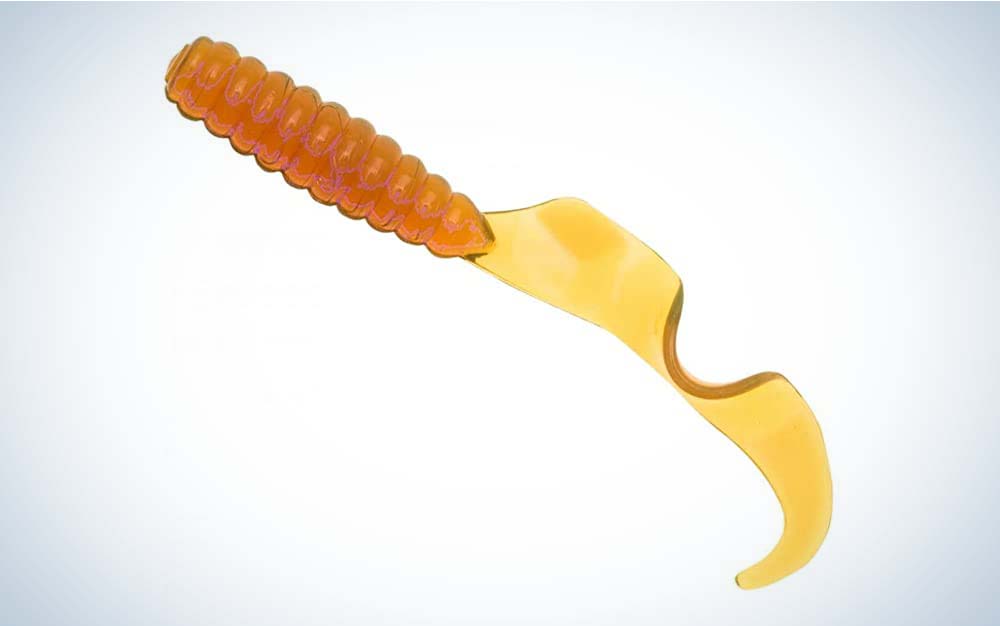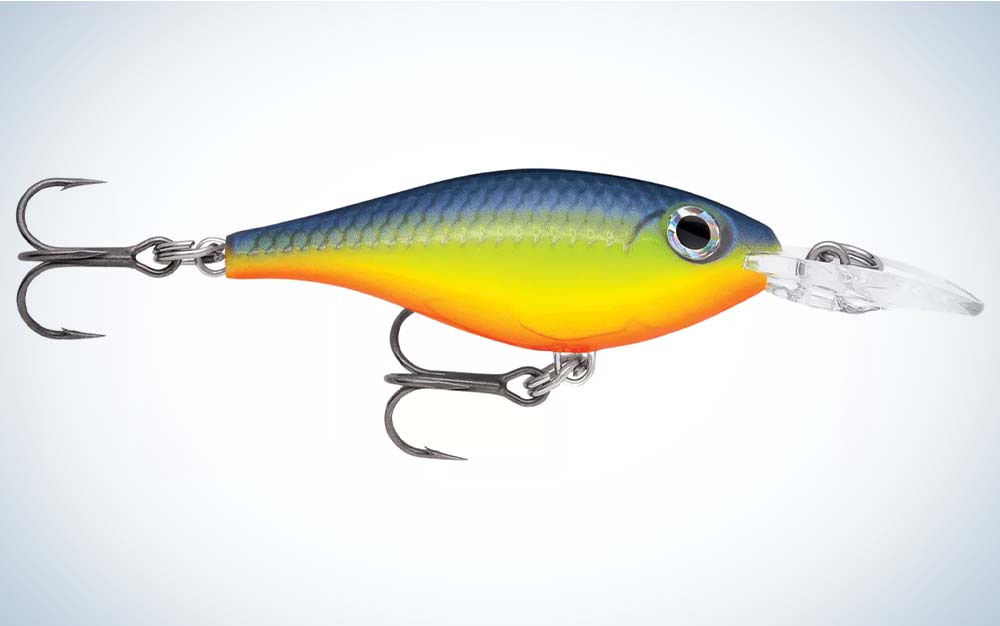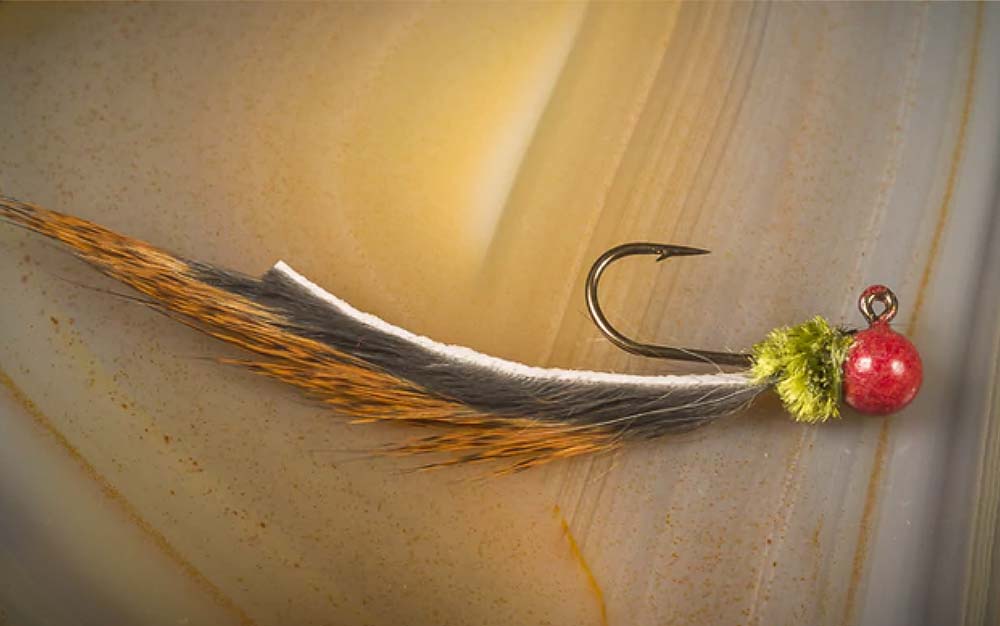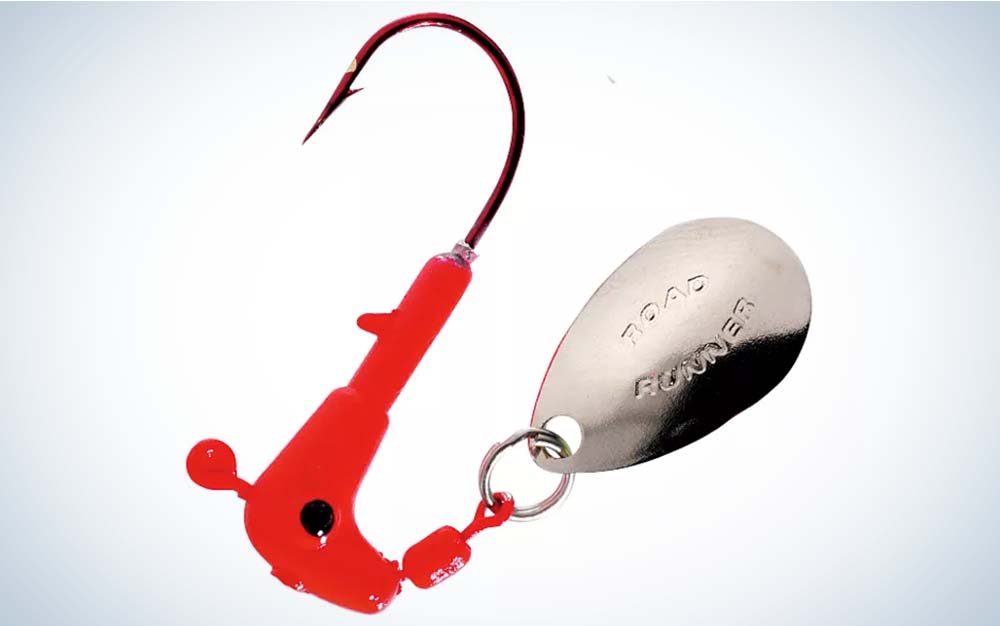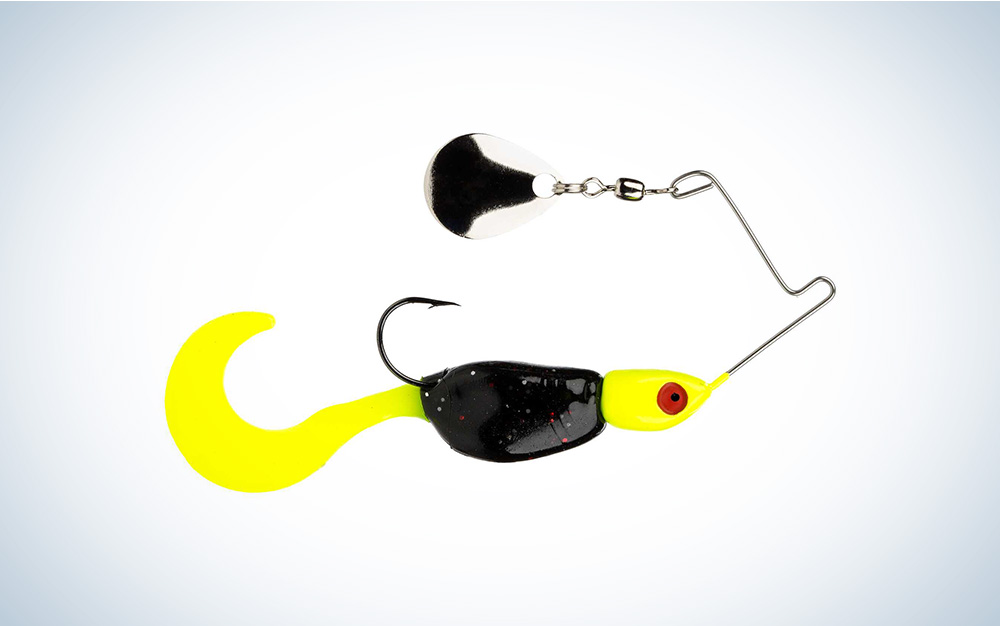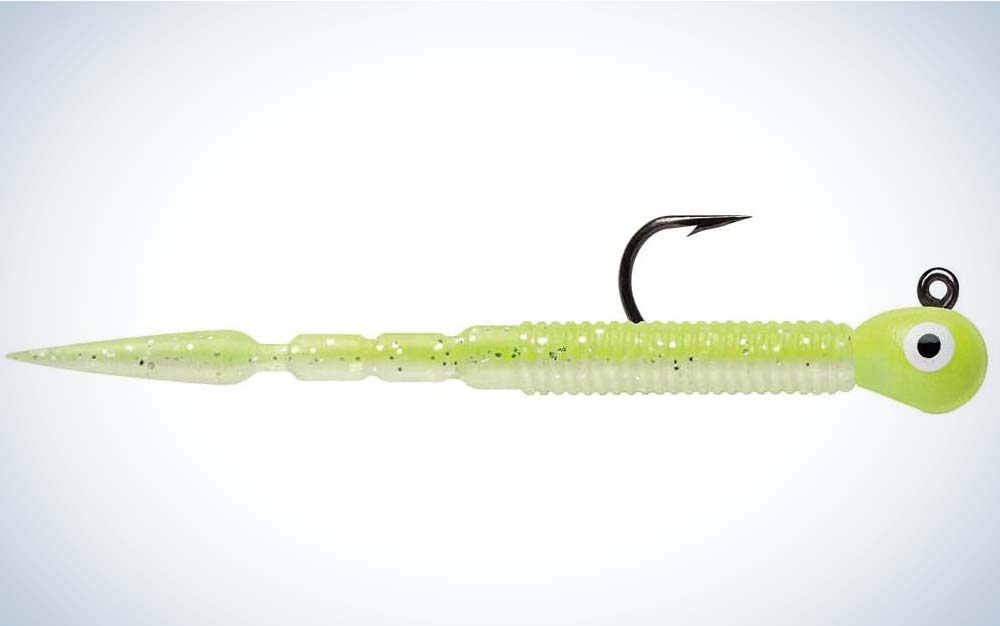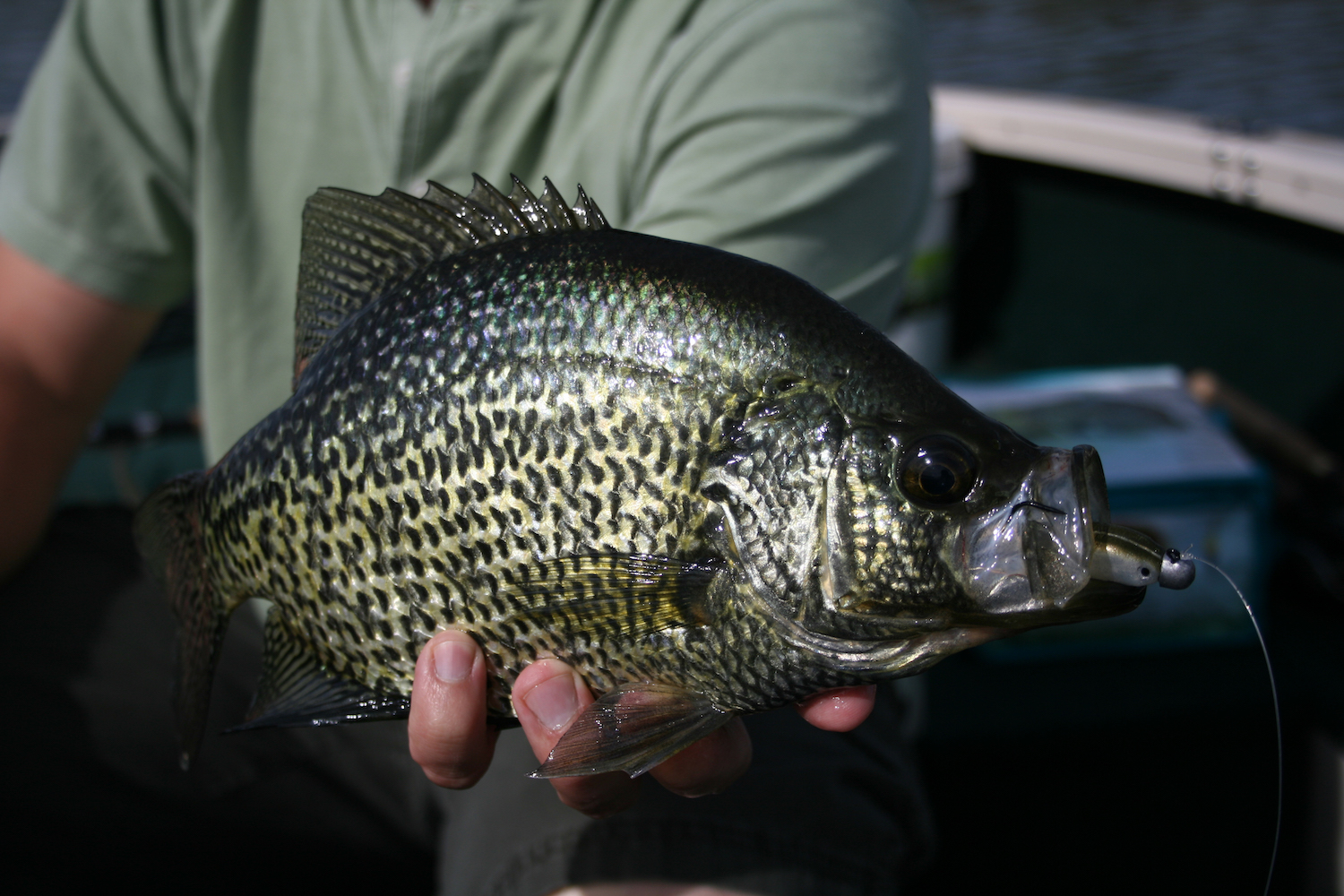
Updated Sep 2, 2022 7:10 AM
Back in my guiding days, friends and I often spent our days off not in pursuit of bass, trout, walleyes, or even giant muskies. Nope. On those rare days between paid trips, the most enjoyable way to unwind was sneaking into some little backwoods lake where—rumor had it—giant crappies swam. That’s where I learned the importance of having the best crappie lures.
I learned that almost any lure could work when you landed on a mega school of the silvery bespeckled panfish. But I also discovered that catching the biggest crappies—and consistently getting bit in tougher conditions—meant getting a little pickier about crappie bait selection. After years of fishing for picky, giant crappie I’ve learned the best crappie lure and here are my top picks.
The baits I use all have physical shapes and silhouettes that appeal to a crappie’s discerning eye. The way the lures swim, kick, and articulate in the water are especially important for triggering bites. So, if you’re looking to put together a crappie catching kit, here are the baits you’ll need.
Key Features
- Sizes: 1.5, 2, and 2.5 inches
- Wide selection of colors
- Slender hollow tube profile with multiple tentacles
- Must-have colors: chartreuse, white, smoke, black/chartreuse
Why It Made the Cut
Perhaps even eclipsing the twister tail grub or crappie “stinger” categories, the soft, hollow, diminutive tube remains perhaps the most appealing crappie bait ever made. Although many companies have dropped smaller tubes from their product offerings, Southern Pro’s Lit’L Hustler remains a terrific, consistently well-made option.
Pros
- Versatile—can trim legs/tentacles to alter bait profile and rate of fall
- Consistent quality
Cons
- Lacking solid colors, such as black
Product Overview
While I’d like to give props to Bobby Garland, who created the original “Gitzit” tube in 1964, Garland Baits no longer offers a crappie-sized tube. Thankfully, Southern Pro and several other companies, such as Mister Twister and Big Bite Baits still sell a simple fish-catching crappie tube. I give the nod to Southern Pro, which offers the broadest selection of sizes and color combinations. The Lit’L Hustler is a consistently well-made tube that catches crappies anywhere in North America. I’d choose a tube without reservation if you forced me to tie on one crappie lure for the year.
Traditionally, a tube is rigged by first sliding a slender jighead, such as a Big Bite Baits Insider Jig into the cavity of the bait. Push the eyelet through the soft material and tie it to your line; 2- to 6-pound test mono works, depending on jig weight and available cover conditions. But you can also fish a tube effectively by rigging it like a grub, threading the tube onto a standard ball-shaped jig. While this allows you to swap baits without retying, it also changes the bait’s trajectory to a head-first sinking motion instead of a more horizontal descent.
Key Features
- Unique ElaZtech material
- Classic 2-inch grub/twister tail profile
- Eight grubs per pack
- Made in the U.S.
- Must-have colors: Electric Pink, Glow, Motor Oil, and Shimmer Pearl
Why It Made the Cut
Every crappie angler needs at least a few packs of twister tail grubs in their bag of tricks because they’re supremely versatile—enabling the angler to cast, vertically jig, or troll.
Pros
- Highest fish-per-bait rating of any crappie grub
- Super soft
Cons
- Must store baits in original packs
Product Overview
Among the top general bait profiles in fishing, the Z-Man GrubZ is perhaps the best option in this classic category. After fishing some of Z-Man’s other super soft yet implausibly durable ElaZtech baits with astonishing success, I discovered the GrubZ and found it to be extremely appealing to crappie and all panfish. Its soft, razor-thin tail pulses and ripples at any retrieve speed—fast or slow swimming or simply dragged and twitched along the bottom. Moreover, the bait’s buoyancy assures its tail will hover and slightly ripple when you stop the retrieve, or let it rest on the bottom. This means you’ll often receive bites by simply letting the bait sit on the bottom.

The only con of this bait is that the ElaZtech material cannot be stored next to other types of soft plastics and you must avoid storing it in high heat. But, if you keep the grubs in their original packaging and don’t leave them in your car on a hot day, all will be well.
You can buy them in 2, 2.5, and 3-inch sizes and nine colors. I like the 2-inch size for most crappie fishing. For colors, try Electric Pink or Glow in darker water; Motor Oil or Shimmer Pearl in clear conditions.
Key Features
- Length: 1.5 inches
- Dives 4- to 5-feet deep, cast or trolled
- Thin shad/baby panfish profile
- Sinks slowly on the pause
- Must-have colors: Hot Steel, Pink Clown, and Yellow Perch
Why It Made the Cut
It’s a Rapala, which means the lure runs perfectly out of the box almost every time. Unlike other crappie-sized crankbaits that feature fat, bulbous bodies, the Ultra Light Shad is flat, slab-like, and thin, offering a realistic facsimile of the prey fish crappies prefer to eat.
Pros
- Proven Rapala Shad Rap action—tight, subtle shimmy that flashes with each body roll
- Weighted body for easier casting
- Catches bonus species, such as bass, trout, pike, and walleye
Cons
- Toothy pike like to snip them off your line
- Relatively expensive
Product Overview
Trolling is an underutilized approach for crappies, and the Ultra Light Shad has proven to be a bonafide fish catching machine everywhere I’ve fished it. The little diving bait perfectly matches yearling shad as well as baby bluegills and crappies, which often fill the tummies of big crappies.
The Ultra Light Shad runs to the optimal depth of about 5 feet for trolling over vegetation—just deep enough to occasionally nick the plant tops. For deeper duty, run it behind a crappie trolling weight or a pinch-on style sinker. In dirty water, Hot Steel and Pink Clown are excellent colors. While Yellow Perch produces excellent action in clear water fisheries. I run a 7-foot medium-light power spinning rod and 6- or 8-pound test braided line for trolling. Tie in a 3- to 6-foot section of 4- to 8-pound test fluorocarbon to the lure, which adds stealth in clearer water. Give the lure occasional twitches of the rod tip to make it dart and pause—an excellent triggering maneuver.
Key Features
- Micro #10 VMC jig hook
- Weight: 1/32, 1/64, and 1/80 ounce
- Tied with a squirrel strip (tail) and chenille (body)
- Powder-coated jig head
- Must-have colors: black or brown
Why It Made the Cut
Elegantly simple and naturally alive in the water, Jeff’s Jigs Panfish Leech is the lure I’d pick if I had just one cast to hook a big crappie.
Pros
- Simple, streamlined design with natural body flow in the water
- Durable—one jig can last 30 or more fish
- Can shorten tail to any size with scissors—and still retain natural action
Cons
- Jeff’s Jigs is a popular, boutique jig tier, so orders can take a few weeks to fill
Product Overview
I can’t think of a better lure for casting or sight fishing crappies in shallow, clear to stained waters than a Panfish Leech. Pitch the jig a few feet in front of a big crappie with 2- or 3-pound test mono and get ready. Give the jig short, quick twitches of the rod tip to make the jig’s tail undulate like a live leech. Or work it beneath a float, imparting occasional darting action to trigger bites.
While most natural fiber crappie jigs utilize marabou feathers, tier Jeff Wenger uses fine strips of squirrel hide—a radically underrated jig material in terms of natural underwater action and flow. Although you might convince Wenger to tie Panfish Leeches in various bright colors—or different sizes to spec—it’s hard to imagine anything better than a simple 1/16-ounce black or natural (brown) pattern for crappies or other panfish.
Key Features
- Pony-shaped jighead with chin spinner
- Willowleaf or Indiana blade
- Weight: 1/32, 1/16, ⅛, and ¼ ounces
- Must-have colors: white, black, and chartreuse
Why It Made the Cut
The addition of a tiny “flicker” blade to a well-balanced jighead adds just enough flash and vibration to attract baitfish-seeking crappies. Rig it with your favorite soft plastic tail or even a live minnow. This classic crappie jig excels both for casting and slow trolling/strolling.
Pros
- Road Runners are now available in eight different configurations, with standard or premium hooks, premium paint jobs, different blade shapes, and bait additions, such as marabou or soft plastics
Cons
- Lack of tiny or “micro” sized hooks/weights
- Blade can be a deterrent at times
Product Overview
The Road Runner remains one of the most recognizable and productive crappie jigs ever made. Designed by Bert Hall of Forsyth, Missouri in 1958, the Road Runner is perhaps the best-selling crappie lure of all time. (The 1/8-ounce white marabou Road Runner remains Blakemore Lure Company’s top seller today.)
Hall’s prescription for fishing the lure was simple: “You can’t fish a Road Runner wrong, as long as you fish it slow.” One excellent method for fishing the jig is to simply throw it behind the boat, set the trolling motor to 4, and start “strolling” along a dropoff, creek channel, or weed edge. Jig the lure once every five to ten seconds for triggering power. A 2-inch twister-tail like the aforementioned Z-Man GrubZ has for me been a proven Road Runner accoutrement that can last a full day’s fishing.
Key Features
- Weight: ⅛ ounce
- Pre-rigged with Strike King Shadpole body
- Must-have color: chartreuse/black
Why It Made the Cut
At certain times of the year, especially summer and early fall, a small spinnerbait has produced exceptional action for crappies. I’ve found it also seems to select for some of the larger fish within a school of crappies. For that reason alone, a Mr.Crappie Spin Baby is worth adding to your panfish arsenal.
Pros
- Pre rigged with a twister-tail style bait in proven fish-catching colors
- Can be cast or trolled to cover water fast
Cons
- Plastic body requires frequent replacing
Product Overview
No one believes crappies will consistently attack a spinnerbait until they’ve seen it happen. But in warmer water periods, while casting or slow trolling along a grass line or brush pile, I’ve boated well over a dozen nice fish per hour. The 1/8-ounce size of the Spin Baby is ideal for working through shallow cover, or even counted down into deeper brush or vegetation. While there are better lures for fishing tight clusters of crappies or small areas, the mini spinnerbait really proves its mettle for covering water and discovering crappies spread across larger areas.
In many waters, the chartreuse/black pattern remains the big scorer. Replace the original Shadpole body with a more durable Z-Man Slim SwimZ or GrubZ for non-stop action and dozens of fish per bait.
Key Features
- Sizes: 2 or 3 inches
- Streamlined shape ideal for skipping
- 12 per pack
- Must have colors: Devil’s Grin, Ghost, and Pink Phantom
Why It Made the Cut
Crappies love hiding beneath boat docks like a dog under the porch on a hot summer day. Slabs the size of pie-plates live there, for sure. But how to get a bait back in there? The answer is dock-shooting, a slingshot-like cast that propels and skips your bait way back into the darkest corners where crappies live.
A simple, streamlined design, the Slab Slay’R features a minimalist profile and subtle tail-wagging action that elicits bites in every crappie environment. Rig it onto a favorite jighead, adding a Bobby Garland Dock Shoot’R Pull Tab for safe and easy dock shooting.
Pros
- No extra appendages facilitate easy skipping across the surface
- Thin spear tail flutters with the slightest rod tip movement
Cons
- Design limits its use to slower, vertical retrieves
Product Overview
Sometimes the best way to catch apathetic crappies is to simply drop something generally the right size and shape in front of their snouts. When crappies hide beneath docks and overhanging cover, I’ve found the Slab Slay’R has the right streamlined design to easily skip way back in there, provided you’ve practiced your skipping or shooting technique.
The little grub body is easy to rig on a 1/16-ounce jighead, while the flat spear-tail quivers and kicks subtly with each twitch of the rod tip. The bait is built for slow, vertical retrieves, and shows a special ability to hover and glide—key when reluctant crappies need a few seconds to investigate before eating. The red/chartreuse Devil’s Grin pattern gets chowed in dirty water. In low light, try bright-glowing Ghost. Pink Phantom shines in almost all conditions.
Key Features
- Compact, heavy tungsten jigheads
- Weights: 1/16 and 1/32 ounce
- Spear-tail design offers subtle kicking action
- Two pre-rigged baits per pack
- Must-have colors: Glow Chartreuse and Pink Chartreuse Glow
Why It Made the Cut
Often, minimalist, worm-like soft plastics with active tail motion can be the most appealing presentation for crappies. The pre-rigged Probe body marries up to a tapered jighead, constructed for high-density tungsten. To fish deeper water crappies while maintaining a diminutive bait size, the stealthy Tungsten Probe Jig offers a lot of advantages over standard lead and larger plastics.
Pros
- Tungsten jighead sinks fast for reaching deepwater crappies
- Worm-shaped Probe body and tail undulates actively with the slightest line movement
- Excellent for deep, vertical presentations
Cons
- Heavy tungsten jighead may sink too quickly for less aggressive crappies, particularly when casting for suspended fish
Product Overview
Like many anglers, I discovered the merits of tungsten jigs while ice fishing for schools of deep crappies. Turns out tungsten is equally valuable for jigging for crappies during summer and fall, when fish may suspend in deeper water, or among deep brush piles. The compact, yet fast-sink nature of a tungsten jig lets you target individual fish on sonar, and quickly drop the lure just a foot above their nose—right where crappies like it. In these deeper scenarios, glow patterns, such as Glow Chartreuse and Pink Chartreuse Glow, attract plenty of attention. Note: The Tungsten Probe Jig often works exceptionally well beneath a float/bobber, as well.
How to Choose the Best Crappie Bait
Where you fish and the bait you tie on are the most important decisions you’ll make while crappie fishing. Where to fish for crappie will depend on the time of year and the body of water and the bait you choose depends on the water clarity, depth of water, and the technique you’re using.

Water Clarity
In dirty or stained water reach for a bright colored bait or one that has vibration. Anything with a blade like the Road Runner or the Mr.Crappie Spin Baby will put off vibration that helps crappie locate the lure by feel rather sight.
Depth of Water
In spring crappie go shallow to spawn and then return to deeper water during the heat of summer. In spring, a lightweight jig is ideal for fishing depths of 1 to 3 feet. In summer, you might be shooting deep water docks with a Bobby Garland Mo’ Glo Slab Slay’R or trolling with a Rapala Ultra Light Shad.
Technique
There are a ton of ways to catch crappie and the lure you choose needs to match the technique you’re using. The best crappie lure for skipping docks won’t be the best crappie bait for jigging deep brush piles. I’ve made choosing the lures easy by identifying which crappie lures are best for different applications.
FAQs
Q: How do you fish for crappie with artificial lures?
Like most serious crappie anglers, I’ve caught a multitude of fish on live minnows, particularly on a spider (spreader) rig or beneath a float. When fishing is extra tough, a live shiner, crappie minnow or some type of insect larvae can’t be beat. That said, once you understand how crappies feed, live bait is rarely necessary.
For extra selective crappies, for example, I like to tie on a 1/16- or 1/32-ounce black hair or marabou jig, which crappies almost always eat without hesitation. Or consider downsizing your soft plastic bait, going from a 2- or 3-inch bait to something around an inch in length. Look to tiny tungsten jigs and microplastics used by ice anglers. Scientific studies have shown that crappies often dine heavily on microscopic zooplankton, and they make even a 1/64-ounce jig, and 1-inch bait look like a big bite of food.
Q: Do you use a float/bobber for crappie?
Especially in the spring or anytime crappies hold in shallow water or around shallow brush or grass, I’ll fish a float with a small jig at least three-fourths of the time. I prefer a sliding balsa (slip) float, which can be adjusted to hover a bait at any depth. The addition of a stop knot or bobber stop on your line, with a tiny plastic bead between the float and the stop is the simplest way to fish a float. For fishing shallower than three feet, a small, fixed float or clip-on style bobber also excels.
The key is to properly “load” the float with a jighead and additional pinch-on or split-shot sinkers. The objective is to make the float sit upright in the water, stem just barely protruding above the surface, so it’s visible and nearly effortless for a fish to submerge. When crappies feel little or no resistance, they’re much more likely to eat and hold the bait, signaling a strike and yielding a successful hookset.
Q: Do crappies like spinners?
At times, especially when covering water by trolling or swimming a lure—or in stained to dirty water—a small spinner blade on any lure or jig can trigger many more bites. Also, when I discover crappies are feeding on small shiners, shad or baby panfish, a Road Runner bladed jig or even a small spinnerbait will often out fish non-bladed baits by wide margins. Conversely, in extra clear water, I’ve found that the addition of a spinner may spook fish. Most of the time, however, crappies key on the flash of the metallic spinner blade and track it via underwater vibration.
Final Thoughts
Amid a mountain of available crappie bait—jigs, plastics, spinners, crankbaits, etc.—I challenge you to try something new this coming year. If you haven’t fished a tiny paddletail swimbait or a crappie crankbait, give one a good test. If you’re having trouble locating fish, try trolling. Once you find a fish or two—perhaps with a small crankbait or spinnerbait— you can almost guarantee more crappies will live in the area. Stop, slow down, and cast a slow-moving jig or a float and soft bait combination. Finally, consider that it’s rarely necessary to harvest an entire limit of 20, 30, or 50 crappies a day. Three or four 9- to 11-inch fish are more than enough to fill our bellies. But if you’re planning to supply an entire neighborhood fish fry, please consider releasing your larger crappies to swim and spawn another day.
